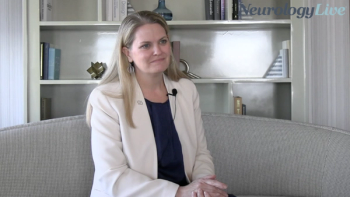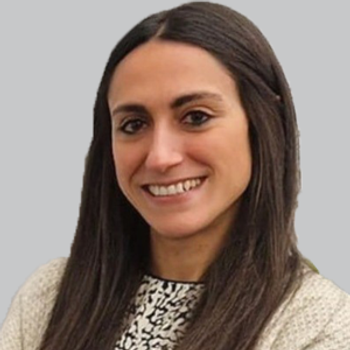
Enhanced Paramedic Assessment in Stroke Does Not Improve Thrombolysis Volume
Observations from more than 1000 cases of stroke suggest that enhanced paramedic assessment should not be used to increase thrombolysis volume but may influence the quality of treatment decisions.
Christopher I. Price, MD
Data from a study of more than 1000
Conducted by Christopher I. Price, MD, Stroke Association HRH Princess Margaret Senior Reader in Stroke Medicine, Population Health Sciences Institute, Newcastle University, and colleagues, the multicenter, cluster-randomized trial compared PASTA (500 stroke cases assessed by 242 paramedics) or standard care (714 stroke cases assessed by 355 paramedics) in the UK between December 2015 and July 2018.
Ultimately, the patients in the PASTA group received less thrombolysis (39.4%; n = 197) than those in the standard of care group (44.7%; n = 319), though the difference was not significant (adjusted odds ratio [OR], 0.81; 95% CI, 0.61—1.08; P = .15; intraclass correlation coefficient, 0.00). Among patients with ischemic stroke, the pattern of data was similar.
Similarly, poor health outcomes did not differ significantly between the groups, though patients in the PASTA group (64%; n = 313) did have a lower rate compared to the standard care group (66.8%; n = 461; adjusted OR, 0.86; 95% CI, 0.60—1.20; P = .39).
“The PASTA trial showed that incremental improvements in thrombolysis delivery are unlikely to be achieved through isolated use of more sophisticated prehospital assessments,” Price and colleagues detailed. “An unexpected finding led us to consider whether structured handover of additional information and/or a multidisciplinary checklist could improve the selection of patients for thrombolysis, particularly in hospitals with lower levels of specialist availability. Further research is required to confirm this hypothesis and demonstrate whether the intervention promotes quality rather than quantity during emergency stroke care.”
READ MORE:
As for the time differences, the time from a paramedic on the scene to thrombolysis administration was a mean of 8.5 minutes longer in the PASTA group (95% CI, 2.1—13.9 minutes; P = .01), with times of 98.1 minutes (standard deviation [SD], 37.6) for the PASTA group and 89.4 minutes (SD, 31.1).
The paramedics trained in the PASTA intervention took a mean of 13.4 (95% CI, 9.4—17.4) minutes longer to complete patient care episodes (P < .001), which Price et al. described as primarily due to having an additional 8.8 minutes (95% CI, 6.5—11.0; P < .001) spent in the hospital. Time spent by the paramedics on the scene was not significantly different (PASTA group: 26.0 minutes; standard care group: 24.2 minutes; difference, 1.61 minutes [95% CI, −0.2 to 3.4]; P = .08).
The authors noted that the PASTA intervention included additional prehospital information collection, a structured hospital handover, practical assistance for up to 15 minutes after handover, a predeparture care checklist, and clinician feedback, while standard care reflected national guidelines. The clusters were made up of paramedics in ambulance stations, prerandomized to PASTA or standard care. Patients attended by study paramedics were enrolled after admission, if a hospital specialist confirmed a stroke and paramedic assessment started within 4 hours of onset. Allocation to PASTA or standard care reflected the attending paramedic’s randomization status.
“It may be surprising that the PASTA pathway did not improve thrombolysis delivery when simpler prehospital interventions have increased treatment rates (e.g., raising the ambulance priority level for suspected stroke) and reduced hospital treatment delays (e.g., prenotification), but the service context of each report is likely to be relevant,” Price and colleagues wrote. “Previously, additional thrombolysis activity was observed at 4 of 6 US centers following a multilevel intervention including public awareness activities, a paramedic symptom checklist, and competitive benchmarking. The 2 unchanged centers had high baseline treatment rates and may have already achieved optimal performance. A similar ceiling effect may explain the lack of effect among PASTA sites, which were already established thrombolysis providers.”
They noted that other data from a multisite Scandinavian trial observed similar results which suggested that the delays following hospital admission may be better reflective of the logistical influences on door-to-needle times, including scan capacity, image reporting, and specialist availability. In this instance, however, Price and colleagues wrote that the standard care time of 54 minutes may indicate services that lacked the logistical capacity to improve
“It is important to recognize that PASTA did not change public awareness, priority response level, identification, or prenotification,” they wrote. “Because UK standard care already includes these components, incremental gains from new interventions become harder to achieve, and an enhanced paramedic assessment may not be powerful enough to augment treatment delivery in contemporary thrombolysis-active services.”
REFERENCE
Price CI, Shaw L, Islam S, et al. Effect of an Enhanced Paramedic Acute Stroke Treatment Assessment on Thrombolysis Delivery During Emergency Stroke Care: A Cluster Randomized Clinical Trial. JAMA Neurol. Published online April 13, 2020. doi:10.1001/jamaneurol.2020.0611
Newsletter
Keep your finger on the pulse of neurology—subscribe to NeurologyLive for expert interviews, new data, and breakthrough treatment updates.


































